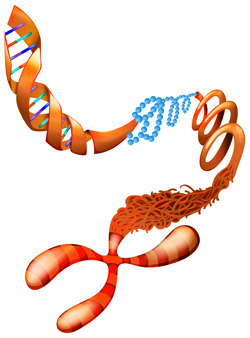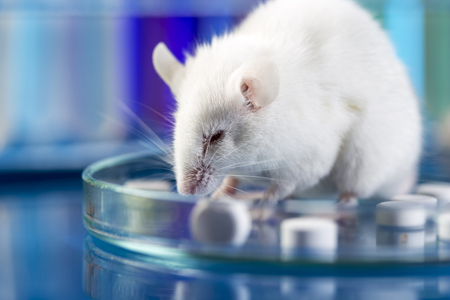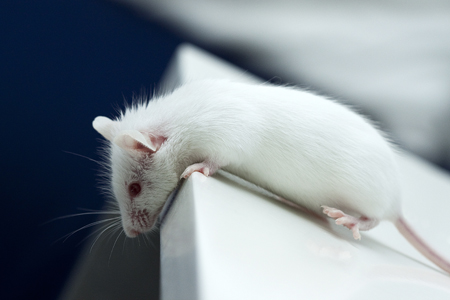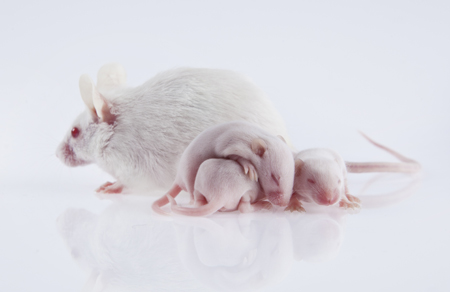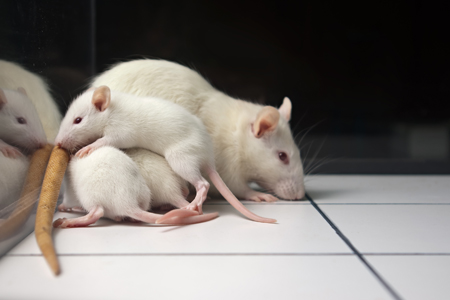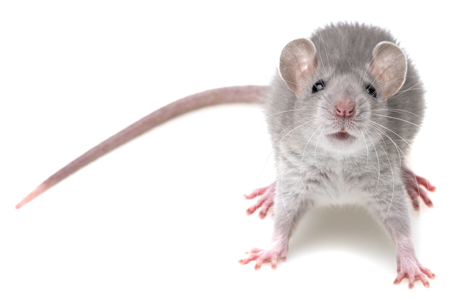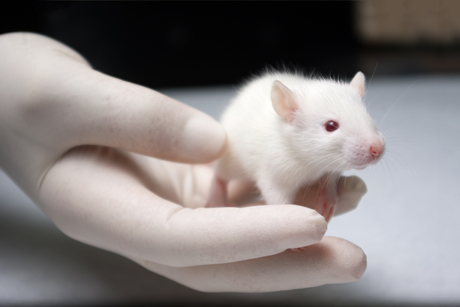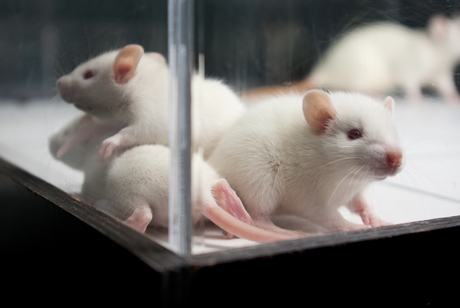Primates Shed Light on the Neurobiology of Anxiety Disorders in Children
Studies of primates suggest that the amygdala plays an important role in the development of anxiety disorders. Researcher Ned Kalin suggested at the 2015 meeting of the Society of Biological Psychiatry that the pathology of anxiety begins early in life. When a child with anxiety faces uncertainty, the brain increases activity in the amygdala, the insula, and the prefrontal cortex. Children with an anxious temperament, who are sensitive to new social experiences, are at almost sevenfold risk of developing a social anxiety disorder, and later experiencing depression or substance abuse.
A study by Patrick H. Roseboom and colleagues presented at the meeting was based on the finding that corticotropin-releasing hormone (CRH) plays a role in stress and is found in the central nucleus of the amygdala (as well as in the hypothalamus). The researchers used viral vectors to increase CRH in the central nucleus of the amygdala in young rhesus monkeys, hoping to determine what impact increased CRH has on a young brain. Rhesus monkeys and humans share similar genetic and neural structures that allow for complex social and emotional functioning.
Roseboom and colleagues compared the temperaments of five monkeys who received injections increasing the CRH in their amygdala region to five monkeys who received control injections. As expected, the monkeys with increased CRH showed increases in anxious temperament. Brain scans also revealed increases in metabolism not only in the central nucleus of the amygdala, but also in other parts of the brain that have been linked to anxiety, including the orbitofrontal cortex, the hippocampus, and the brainstem, in the affected monkeys. The degree of increase in amygdala metabolism was directly proportional to the increase in anxious temperament in the monkeys, further linking CRH’s effects in the amygdala to anxiety.
Short Telomeres in a Rat Model of Depression, Lithium Reverses Abnormality
Telomeres are repeated DNA sequences that sit at the end of chromosomes and protect them during cell replication. Telomeres get shorter with aging and with stressors or psychiatric illnesses. Researcher Alexandre Mathe and colleagues recently found that in a line of rats bred to be more susceptible to stress and depression-like behavior, hippocampal telomeres were shorter than in normal rats or rats bred to be less susceptible. The susceptible rats also had lower levels of enzymes that maintain telomere length. Both telomerase activity and Tert (telomerase reverse transcriptase) expression were reduced in the susceptible rat compared to the other rats. However, lithium reversed the low levels of telomerase activity and Tert expression.
Editor’s Note: Lithium increases hippocampal volume in people, and also increases human telomerase. Researcher Lina Martinsson reported in 2013 that lithium increases telomere length in white cells. Now lithium has increased hippocampal telomerase in a rat model of depression. Short telomeres are associated with aging and increased vulnerability to a wide range of medical and psychiatric disorders. Since people with bipolar disorder are prone to memory problems, medical problems, and short telomeres, they might want to talk to their physician about including lithium in their treatment regimen, if they are not already taking it.
The Combination of N-Acetylcysteine and Varenicline Reduces Nicotine Addiction in Rats
Nicotine addiction is highly cue-dependent, meaning that certain situations or places will make smokers crave a cigarette even if they’re trying to quit. Researchers working with rodents are exploring a combination of treatments that address different behavioral and neurobiological mechanisms to reduce nicotine addiction. In a recent study by Cassandra Gipson-Reichardt and colleagues, N-acetylcysteine reduced cue-induced nicotine seeking, while varenicline reduced nicotine self-administration. Together the drugs worked better to reduce nicotine relapse than either drug on its own.
In the study, rats were trained to self-administer nicotine (with 0.02mg/kg infusions), and cues were used to reinstate nicotine seeking. The rats were treated with 10 and 30 mg/kg injections of NAC and 1 and 3 mg/kg injections of varenicline.
Relapse is associated with rapid synaptic potentiation in the reward area of the brain, the nucleus accumbens. In addition to the positive behavioral changes noted, NAC also inhibited this synaptic potentiation, limiting rapid changes in the size of spines on dendrites and reducing the ratio of AMPA to NMDA (two different compounds that mimic glutamate) in the core of the nucleus accumbens.
Editor’s Note: The combination of NAC and varenicline has not yet been studied in humans, but because both compounds are effective in reducing smoking, it is likely that this animal research on nicotine will be replicated in humans who are addicted to the nicotine in cigarettes.
Heart Attacks, Surgery Lead to Memory Impairment in Mice
Events like surgery or heart attacks that cause inflammation can lead to cognitive deficits or depression for months or years afterward, even though the direct effects of inflammation wear off within weeks. In a recent study, Natalie Tronson and colleagues subjected mice to surgical heart attack, sham surgery, or no operation, and observed how well they absorbed new learning eight weeks later.
Both male and female mice had impairments in fear learning following surgical heart attacks. Female mice that received sham surgery also showed deficits in fear learning. When the researchers dissected the mice, analyzing their blood and hippocampi after the eight-week period, inflammatory cytokine measures had normalized as expected, but the researchers found other abnormalities.
Intracellular signaling was dysregulated, and there had been epigenetic changes in cells of the hippocampus. (Epigenetic changes refer to those that change the structure of DNA, such as how tightly it is wound, rather than its sequence. For example, the addition of acetyl groups to DNA or the histones around which it is wound.) The researchers observed increased histone acetylation and phospho-acetylation following the heart attacks.
The researchers concluded that a systemic inflammatory event, such as heart attack or surgery, can cause long-term memory impairment and changes in mood through epigenetic mechanisms. They compared the findings to those of other studies in which normal aging and memory-impairing treatments such as chemotherapy had also been associated with increases in histone acetylation or decreases in histone deacetylase activity.
Early Life Stressors Lead to Lifetime Increase in Inflammation in Mice
Stressors in early life can contribute to the risk of developing mood disorders. Given that many treatments for mood disorders work by blocking the serotonin 5-HT transporter, Nicole Baganz and colleagues designed a study to see whether an early life stressor, in this case maternal separation, would affect immune processes that in turn affect serotonin signaling.
In this study as in many before it, mice that were removed from their mothers exhibited behaviors that resembled human anxiety and depression. They were also found to have elevated messenger RNA for several inflammatory cytokines (including IL-1beta and IL-6) in their brain and blood. Mice that had a gene for the interleukin-1 receptor (IL-1R) removed exhibited neither the depressive behavioral effects nor the changes in cytokine levels following maternal separation, showing that the IL-1R gene plays a necessary role in the signaling process that leads to this type of depression. Levels of the stress hormone corticosterone in the blood did not differ in the mice with and without the IL-1R gene.
The researchers concluded that early life stressors can cause lifelong changes in inflammatory cytokine levels in mice.
Young Rats That Witness Maternal Abuse Show Depression-Like Behavior in Adulthood
Rodents that are subjected to social defeat (being overpowered by a bigger, more aggressive animal) develop a syndrome that resembles human depression—they avoid social interaction, lose interest in sucrose, and do less exploring of new places or other animals. A recent finding showed that even witnessing the social defeat of a peer was enough to bring about the depressive behaviors. The same researchers, led by Samina Salim, recently found that young rats (aged 21–27 days) that witnessed their mother go through the trauma of social defeat showed depression-like behavior themselves as adults (at age 60 days).
The rats saw their mothers defeated by the larger rat every day for seven days. As adults, those who witnessed this abuse exhibited depression-like behavior compared to rats of the same age and gender that had not witnessed abuse. The depressive rats gave up more quickly on a test of forced swimming. Male rats showed great depression-like behavior than female rats.
It has been estimated by the American Psychological Association that 15.5 million children in the US witness physical or emotional abuse of a parent (usually their mother). Children who witness domestic violence often show symptoms of post-traumatic stress disorder (PTSD). This rodent research may lead to a better understanding of the consequences of witnessing trauma in childhood, and potential treatments that could help.
Editor’s Note: These data show that rats have something like empathy, and that the psychological aspects of stress (including verbal abuse in humans and witnessing another’s abuse in rodents) may have profound and lasting consequences on behavior.
Oxytocin Can Block Stress-Induced Relapse of Cocaine Seeking in Animals
Stress can trigger former drug users to begin taking drugs again. In clinical trials, the bonding hormone oxytocin has been found to reduce stress-induced cravings for certain drugs, including alcohol and marijuana. A new study in animals suggests that oxytocin may be able to reduce stress-induced cocaine cravings as well.
Brandon Bentzley and colleagues combined an unpredictable shock to the foot with an alkaloid called yohimbe that comes from a particular tree bark to apply stress to animals who had previously developed a cocaine self-administration habit that had since been extinguished. The combination of the foot shocks and yohimbe brought back robust reinstatement of the animals’ cocaine seeking behaviors, but pretreatment with oxytocin (at doses of 1 mg/kg) prevented this reinstatement.
This research suggests that oxytocin has potential to prevent stress-induced cocaine cravings in people.
HDAC Inhibitors Treat Mania-Like Symptoms in Mice
Mice with a particular genetic mutation affecting circadian rhythms exhibit symptoms that resemble those of human mania: disruption of sleep and wake cycles, hyperactivity, and reduced anxiety and depression. It has been found that these behaviors can be normalized by inhibiting a type of enzyme called histone deacetylases (HDACs). HDACs bring about epigenetic changes to gene transcription by removing acetyl groups from histones, the structures around which DNA is wrapped. Removal of the acetyl group tightens the structure of the DNA, making it more difficult to transcribe. The drug valproate (trade name Depakote) is one type of HDAC inhibitor. It prevents the removal of the acetyl groups, loosening the structure of the DNA, making it easier to transcribe.
A recent study by Ryan Logan and colleagues compared the effects of valproate and other HDAC inhibitors on mice with a mutation in the Clock delta 19 gene, which causes mania-like symptoms. Valproate and the HDAC inhibitor SAHA both normalized the mice behavior. MS275, another HDAC inhibitor that targets only class I HDACs, also normalized the behaviors. The researchers were able to determine that all of these treatments targeted a specific class I HDAC called HDAC2, which has been implicated in schizoaffective and bipolar disorders.
These data link epigenetic mechanisms (HDAC inhibition) to the antimanic effects of valproate in this animal model of mania. It appears that maintaining the presence of acetyl groups on histones has antimanic effects in mice with a mutation in the Clock delta 19 gene.
Anti-Inflammatory Treatment Prevents the Effects of Stress in Female Rats
Women are more likely than men to experience depression, and this difference begins in adolescence, when girls show more sensitivity to stress. Researchers are studying how animals react to stress in the hopes of learning what mediates these gender differences in mental illness.
At a recent scientific meeting, researcher Jodi Lukkes and colleagues presented a recent study of stress and inflammation in female rats. The rats were exposed to different types of stressors. Some were separated from their mothers for four hours a day during the first 20 days of their lives. Later, some rats were exposed to an acute stressor, witnessing another rat receiving shocks. All the rats were placed in a box in which they could escape a shock by jumping to the other end of the box, in order to measure their motivation. Because drugs that inhibit the inflammatory enzyme COX-2 had reversed the effects of maternal separation in earlier studies, the researchers also treated some rats with these anti-inflammatories.
The researchers found that anti-inflammatory treatment could prevent behavioral consequences of stress in adolescent female rats. Witnessing another rat being shocked brought about deficits in motivation (a depression-like behavior), but in rats that had received treatment with a COX-2 inhibitor, these deficits were reduced. The COX-2 treatment was only helpful to rats that had experienced an acute stressor in their lifetime, either maternal separation in infancy, or witnessing another rat receive the shocks. A history of stress was required for the anti-inflammatories to improve motivation.
Lukkes and colleagues hope that this research begins to clarify the relationship between stress, inflammation, and gender. This may eventually lead to new targets in the treatment of depression.
Transgenerational Transmission of Drug Exposure and Stress in Rodents
New data suggest that there can be transgenerational transmission of the effects of drug exposure and stress from a paternal rat to its offspring. The father mates with a female who was not exposed to drugs or stress and never has any contact with the offspring. Consensus is now building that this transmission occurs via epigenetic alterations in sperm.
Epigenetic alterations are those that are mediated by chemical changes in the structure of DNA and of the histones around which DNA is wrapped. These changes do not alter the inherited gene sequences but only alter how easy it is for genes encoded in the DNA to be activated (transcribed) or suppressed (inhibited).
There are three common types of epigenetic modifications. One involves the attachment of a methyl or acetyl group to the N-terminals of histones. Methylation typically inhibits transcription while acetylation activates transcription. Histones can also be altered by the addition of other compounds. The second major type of epigenetic change is when the DNA itself is methylated. This usually results in inhibition of the transcription of genes in that area. The third epigenetic mechanism is when microRNA (miRNA) binds to active RNA and changes the degree to which proteins are synthesized.
At a recent scientific meeting, researchers described the various ways epigenetic changes can be passed on to future generations.
Researcher Chris Pierce reported that chronic cocaine administration increased brain-derived neurotrophic factor (BDNF) in the medial prefrontal cortex of rats. (BDNF is important for learning and memory.) The cocaine administration led to acetylation of the promoter for BDNF.
This exposure to cocaine in male rats who then fathered offspring led to two changes in the offspring, presumably conveyed by epigenetic changes to the fathers’ sperm. The first change was a decrease in cocaine reinforcement. The offspring took longer to acquire a cocaine self-administration habit. The second change was long-lasting learning deficits in the male offspring, specifically recognition of novel objects. The deficit was associated with a reduction in long-term potentiation in the offspring. Long-term potentiation is the strengthening of synapses that occurs through repeated patterns of activity. Surprisingly, the following generation also showed deficits in learning and memory, but did not show a loss of long-term potentiation.
Editor’s Note: These data indicate that alterations in sensitivity to cocaine (in this case slower acquisition of cocaine self-administration) can be transferred to a later generation, as can learning deficits in males. These data suggest that fathers’ experience of drugs can influence cocaine responsiveness and learning via epigenetic mechanisms likely mediated via epigenetic changes to the father’s sperm.
This research suggests the possibility that, in a human clinical situation, there would be three ways that a father’s drug abuse could affect his child’s DNA. First, there is the traditional genetic inheritance, where, for example, an increased risk for drug abuse is passed on to the child via the father’s genetic code. Next, drug abuse brings about epigenetic changes to the father’s sperm. (His genetic code remains the same, but acetyl groups attach to the BDNF promoter section of his DNA, changing how those proteins get produced.) Lastly, if the father’s drug abuse added stress to the family environment, this stress could have epigenetic effects on the child’s DNA.
Researcher Alison Rodgers described how epigenetic changes involving miRNA in paternal rats influence endocrine responsivity to stress in their offspring. Rodgers put rats under stress and observed a decrease in hormonal corticosterone response to stress. When a father rat was stressed, nine different miRNAs were altered in its sperm. To prove that this stress response could be passed on transgenerationally via miRNAs, the researchers took sperm from an unstressed father, loaded it with one or all nine miRNAs from the stressed animal, and artificially inseminated female rats. Rodgers found that the sperm containing all nine miRNAs, but not the sperm carrying one randomly selected miRNA, resulted in offspring with a blunted corticosterone response to stress.
Researcher Eric Nestler showed that when a rodent goes through 10 days of defeat stress (being defeated repeatedly by a larger animal), they begin to exhibit behaviors resembling those seen in depression. Social avoidance was the most robust change, and continued for the rest of the animal’s life. Animals did not have to be physically attacked by the bigger animal to show the depression-like effects of defeat stress. Just witnessing the repeated defeats of another rat was sufficient to produce the syndrome. Again, father rats that experienced defeat stress or witnessed it passed this susceptibility to defeat stress on to their offspring (with whom they never had any contact), likely by epigenetic changes to sperm. Read more


